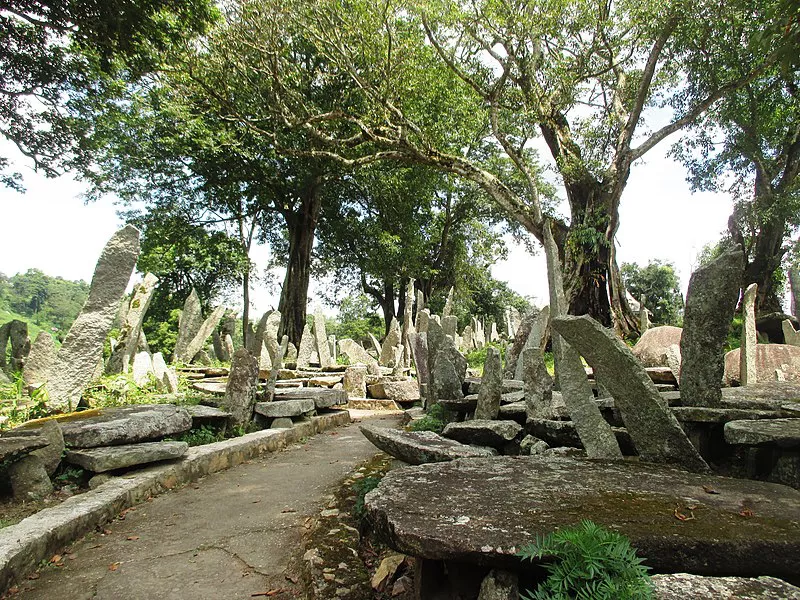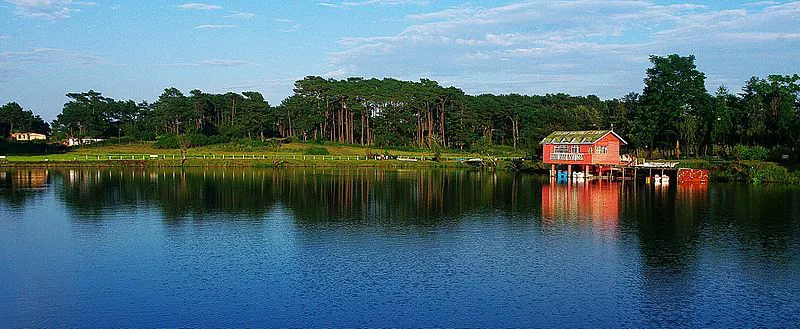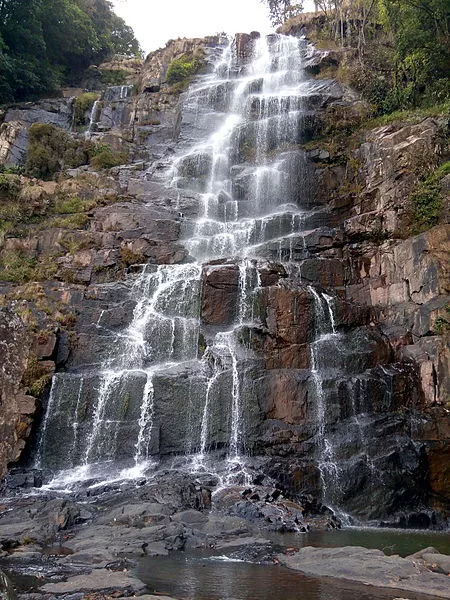

The significance of Nartiang village is because of its status as a Summer Palace of the Jaintia King whose Capital was Jaintiapur. The remnants of the summer Palace is located on a hillock approximately two kilometers from the Nartiang market. The archway which can be seen to this day shows that they were well versed in the making of red bricks similar to the ones used by the Ahom Kings of Assam. From the cannons found in the Shiv temple it goes to show that they had skills in techniques of fire arms and metallurgy. At present there lies a Hindu temple in this vicinity and the priests who practice, there are direct descendants of the original priests that came from Jaintiapur.
Check out some amazing Meghalaya Tour Packages

Close to the town of Jowai there is an artificial lake at Thadlaskein fed by a perennial spring. According to tradition, one Chieftain Sajar Nangli had an irreconcilable difference with the King of Jaintiapur. Not wanting to be blamed for an inevitable bloodbath he decided to flee from the Kingdom with his followers. Before his departure, however, they dug the present day lake with the ends of bows as a memorial. The lake is revered by the people of Raid Mukhla who continue to offer sacrifices near the Lake. A popular picnic spot for locals.
Read Blog Post: Spend a day at Thadlaskein Lake, a historic lake in Nartiang
Adjacent to the ruins of the Summer Palace of the Jaintia King near the arched gateway of red bricks stands the Durga Temple. It is believed that the temple was constructed by the Jaintia King on his conversion to Hinduism. It is said that the temple construction initially was like a typical Khasi house having a Central wooden pillar (dieng Blai) and the roof was in thatch. Later, the thatch was replaced by a corrugated tin roof. Further modification on the roof as we now see has a steeple like a Church.
Read Blog Post: The enchanting 600-old Durga Mandir that should be on your travel list


The biggest collection of monoliths or Megalithic stones in one single area is to be found north of the Nartiang market. These consists of Menhirs (Upright stones) Moo Shynrang and Dolmens (flat stones in the horizontal position) locally known as Moo Kynthai. Within the perimeter of these Megalithic collection stands the tallest Menhir erected by U Mar Phalyngki a trusted lieutenant of the Jaintia King to commemorate his victory in battle. Other monoliths were erected by U Mar Phalyngki, U Luh Lyngskor Lamare and various clans of Nartiang village between 1500A.D.and l835A.D.
Tyrshi Falls on the Shillong-Jowai Road is Jowai's answer to Shillong's Elephant Falls. This fall is located about 5 kms from Jowai. A pretty arch bridge connects across an expanse of green paddy fields, which opens up to the gushing Tyrshi falls thundering down to the Pynthor (paddy-fields) below. A winding footpath offering a breathtaking and panoramic view of the Pynthor Nein, eases your trek down to the bottom of the falls, which glides down like milk over a vertical drop.
Read Blog Post: Tyrshi Falls: A stunner in Jaintia Hills
